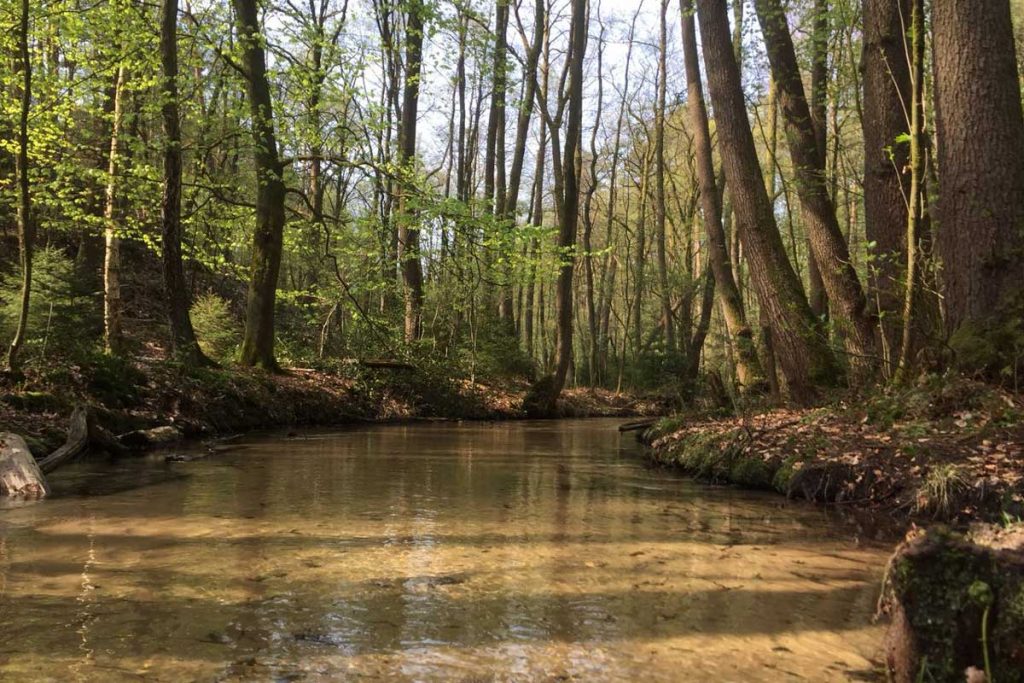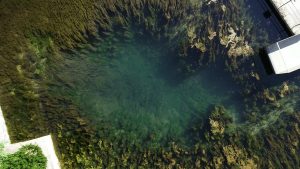Water reservoir on two levels
Water reservoir on two levelsThe groundwater resources of the Senne are among the most important in North Rhine-Westphalia. The abundant water supplies are located in two separate groundwater levels. For over 100 years, the Bielefeld municipal utility has been pumping drinking water from both the Senne sand at a depth of 20 to 25 metres and from the layers of the Upper Cretaceous at a depth of around 450 metres. In the responsibility of future generations, it is an important task to protect the Senne groundwater in such a way that, in terms of quality and quantity, it is also available in the long term to meet the water needs of the region.
Kristallklar und voller Leben – die Sennebäche
The great German rivers Ems and Lippe have their source in the Senne, and next to them a whole series of small streams. Since the Senne is a plain sloping from the Teutoburg Forest in a south-easterly direction, all source streams flow in this direction until they finally flow into one of the two rivers. The water comes out of the sand in seepage springs or swamp springs (these are areas of soil that have been wetted over a large area by spring water, the small rivulets of which only form a spring stream behind the source area) and runs for the first few kilometres in so-called box valleys. This is the name given to stream valleys deeply cut and box-shaped in cross-section.
The Senne streams have clean, crystal clear water. The sandy subsoil is naturally not particularly rich in structure, however, aquatic plants, dead wood and fallen leaves offer enough hiding places for a diverse range of animal life in the water. The upper reaches of some bodies of water (in particular the Furlbach or the streams that arise in the Senne military training area) are largely undeveloped in longer sections and are characterised by their high degree of naturalness. In the floodplain areas of the Senne streams, there is a rich nearness of very differently developed small bodies of water, which together with the numerous, sometimes very large-scale excavation waters of the Senne landscape, provide a very diverse range of different living conditions.

Moors
The moors of the Senne are counted among the heather moors. These are very small moors that lie in so-called blow-out basins in the dune fields of the Senne. If water stays in wind-blown sand pits for long periods of time, peat moss can grow and eventually small moors can form. In the Senne, they often only have a diameter of significantly less than 100 metres. They are special habitats with difficult living conditions: the water is very acidic and there are few nutrients. Only plants that are adapted to these extreme conditions thrive here.
Here you will find further information on plants (link to flora) and animals (link to fauna) that are in the waters and moors of the Senne and on nature reserves (link to NSG) in which you can hike through this special habitat.







